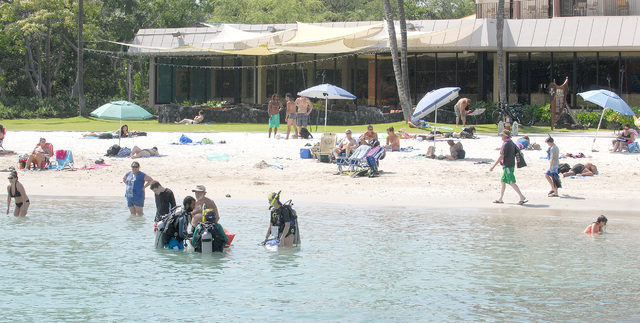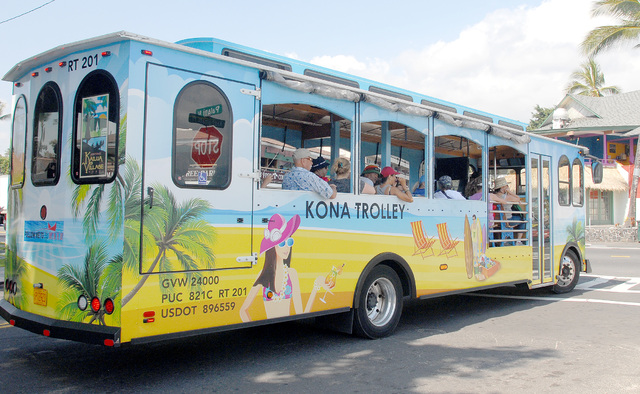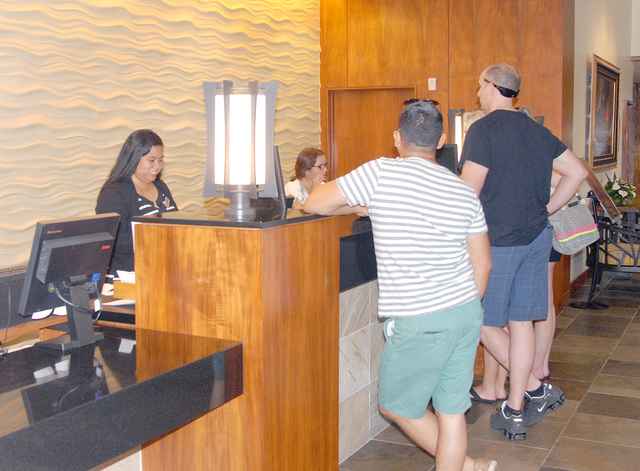Tourism once again is expected to be the main economic driver on the Big Island during the next few years, with hotel rooms plentiful and bargain-priced compared to Oahu. ADVERTISING Tourism once again is expected to be the main economic
Tourism once again is expected to be the main economic driver on the Big Island during the next few years, with hotel rooms plentiful and bargain-priced compared to Oahu.
That’s according to UHERO, the University of Hawaii Economic Research Organization, that Friday released a report showing a 2.7 percent increase in overall tourism on the Big Island, despite an 8.1 percent drop in Japanese visitors after the loss of direct flights from Japan to Kona International Airport.
Hawaii Island’s tourism increase is higher than Oahu’s 0.3 percent, but not as optimistic as 5.4 percent for Maui and 3.8 percent for Kauai so far this year. Tourism is expected to see additional healthy gains on the neighbor islands for the next two years before rising occupancy and costs begin to bring down growth rates, something that already occurred on Oahu.
“You’ve got capacity,” Carl Bonham, UHERO executive director, said Monday. “Air flight growth will be really phenomenal for all of the summer, with double-digit growth in the number of scheduled airline seats, and you’ve got places to put them.”
But the UHERO report and views on the ground differ on the second leg of the economic recovery — construction.
Local builders say, and county permit data confirm, that construction is up. The first 10 months of 2014, the latest data available from the county Department of Research and Development, shows the number of building permits up 18.2 percent, and their value is up 28.5 percent compared to the first 10 months of 2013.
Construction jobs, on the other hand, show a dismal 2.7 percent decrease the first four months of this year, compared to the first four months of 2014, according to UHERO data. There are 300 fewer construction jobs on the Big Island this year compared to last.
“The construction industry has begun to add a moderate number of jobs on Oahu and Maui, but there are no signs of life yet on the Big Island or Kauai,” the report states.
Bonham said his conversations with Big Island builders also indicate construction is up. He said there are several possible reasons for the disconnect between the construction and the jobs data. It’s possible construction companies are using job agencies for their workers, for example, which could move the construction jobs into a different category, such as business services.
It’s also possible building is concentrating in areas that don’t use as many workers, such as poured concrete and multifamily homes. HPM Building Supply, for example, is panelizing, or prefabricating, housing components at its Keaau facility, resulting in fewer workers at construction sites.
Andrew Tyner, contractor sales manager at HPM, said he’s seeing a lot of builder confidence, new builders joining the scene and builders returning to projects that might have sat idle since 2008, when the recession hit.
“We’ve really seen the trend in the last two years,” Tyner said. “There’s a lot more buyer confidence. … All really positive signs for development.”
The UHERO Forecast Project is a community-sponsored research program of the University of Hawaii at Manoa. The Forecast Project provides the Hawaii community with analysis on economic, demographic and business trends in the state and the Asia-Pacific region.
A summary of the report is available at uhero.hawaii.edu/assets/15Q2CountyForecast-Public.pdf.
Email Nancy Cook Lauer at ncook-lauer@westhawaiitoday.com.





